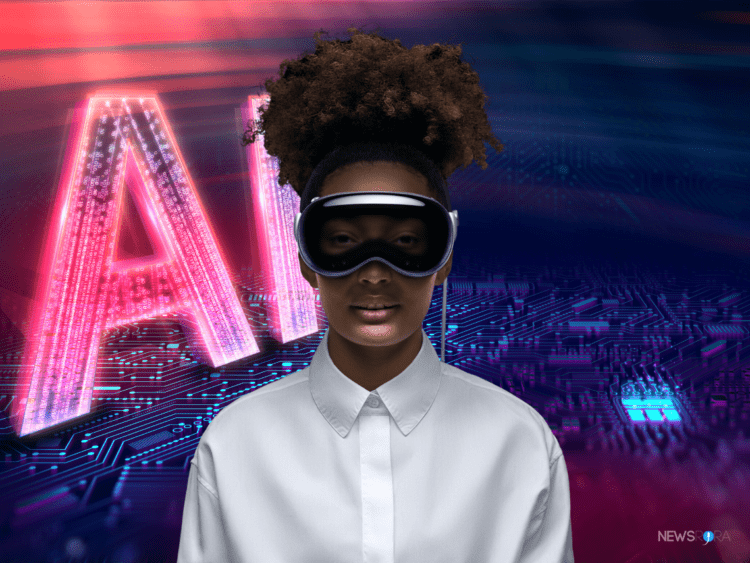The technological landscape is witnessing a monumental shift as tech giant Apple makes a significant foray into the world of artificial intelligence (AI). In a strategic move designed to position itself alongside AI heavyweights such as Google and OpenAI, Apple is reportedly developing a large language model chatbot known as ‘Apple GPT‘. But this move isn’t just about new products or stepping into the AI ring; it also opens up a world of opportunities to revolutionize Apple’s existing product lineup. One such product, the recently launched Apple Vision Pro, stands as an apt illustration of this potential transformation.
AI: A New Chapter for Apple
Apple’s AI venture, marked by its AI chatbot, is part of the company’s bid to stake its claim in the competitive AI market. Developed on Apple’s in-house framework dubbed ‘Ajax’, which interestingly runs on Google Cloud, the Apple GPT has immense potential. While Apple remains tight-lipped about its plans for the consumer launch of this technology, the internal testing and development of Apple GPT already underscore Apple’s bold move into the AI domain.
Apple Vision Pro: The Perfect AI Playground
Apple Vision Pro, Apple’s innovative venture into spatial computing, provides an exemplary platform to showcase the power of AI integration. The Vision Pro seamlessly merges digital content with physical surroundings, with users navigating through eye movements, hand gestures, and voice commands.
The device offers an ‘infinite canvas’ for apps, transforming any environment into a personal workspace or theater, thanks to its high-definition visuals and spatial audio. Moreover, with the incorporation of Apple’s first 3D camera, users can capture and relive memories like never before. This breakthrough technology also enhances collaboration, with life-size FaceTime video tiles and simultaneous document sharing.
The Role of AI in Augmenting Vision Pro
By leveraging the power of Apple’s AI, the Vision Pro could unlock even more advanced features. Personalized user experiences could become more precise and intuitive with AI’s predictive capabilities. For instance, AI can analyze users’ interaction patterns to provide more contextually relevant content or automatically adjust settings based on user preferences.
AI could also improve the Vision Pro’s 3D camera capabilities, enabling better image recognition and enhancing the depth and realism of spatial photos and videos. Meanwhile, in the area of communication and collaboration, AI can offer real-time translation services during FaceTime calls, fostering more inclusive and productive interactions.
The device’s new spatial operating system, visionOS, could leverage AI for more efficient eye, hand, and voice tracking, creating an even more immersive and intuitive user experience. Moreover, AI could enhance the Vision Pro’s privacy features, using advanced algorithms for secure authentication systems beyond the existing Optic ID.
AI’s potential applications in Vision Pro only scratch the surface of its possibilities. As Apple continues its journey into the AI space, the integration of AI technology into existing products like Vision Pro could redefine the user experience and set a new standard in the industry.
A New Era of Innovation
Apple’s dive into AI marks a pivotal moment in the AI landscape. The company’s commitment to privacy-centered AI tools could redefine the balance between user-friendly AI applications and data security. Furthermore, the integration of AI into existing products like Vision Pro illustrates the transformative power of AI, pushing the boundaries of user experience in unprecedented ways. As the world watches Apple’s progress in its AI journey, we are standing on the brink of a technological revolution, eagerly awaiting what comes next.













